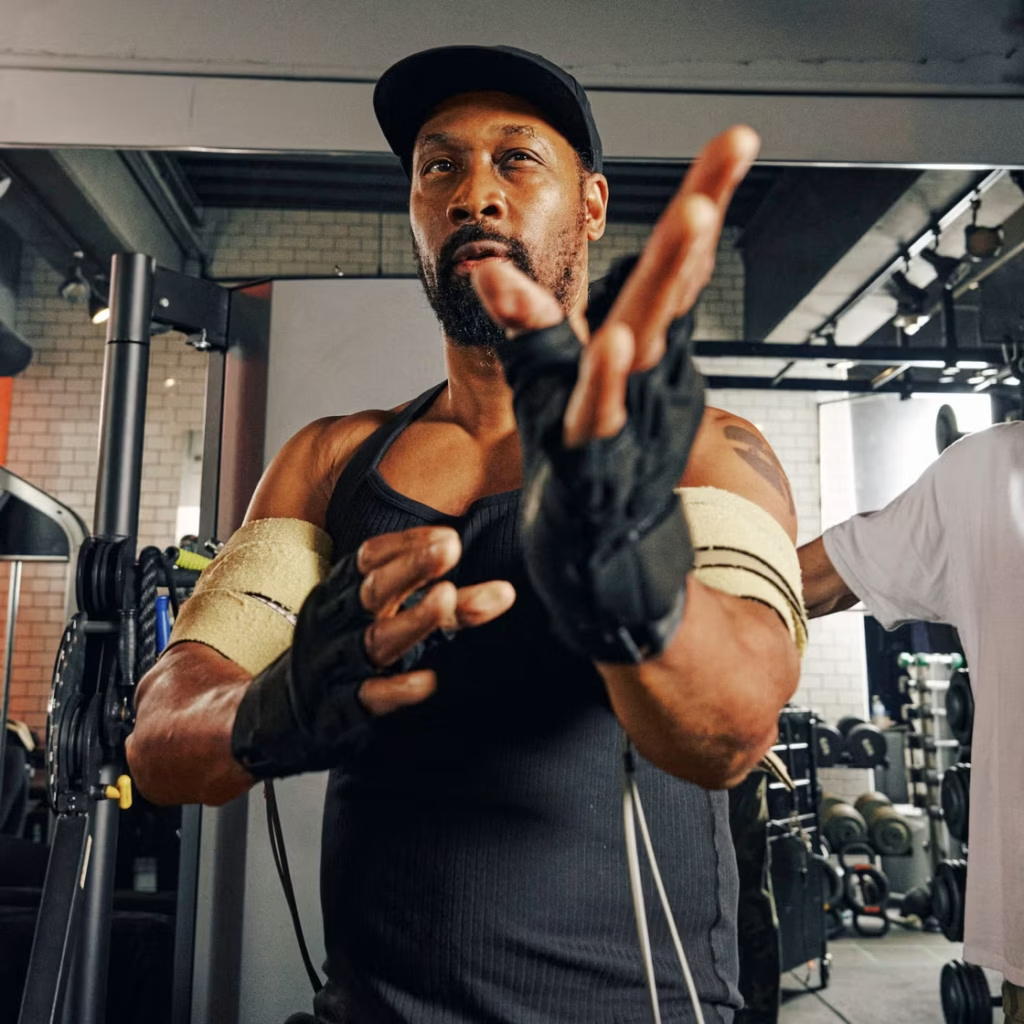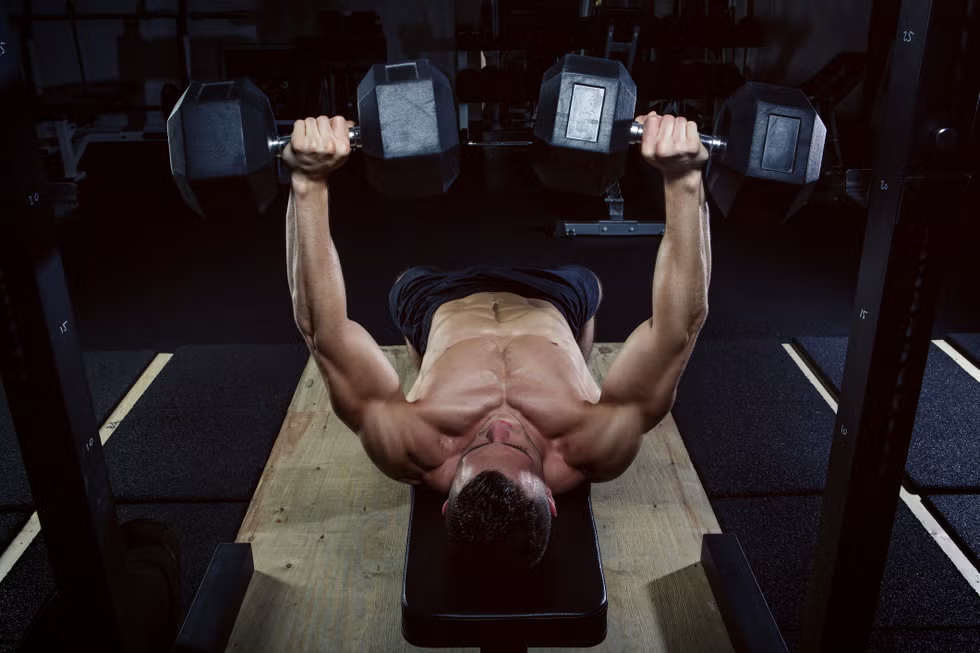JUST ABOUT EVERY core routine ever created has one move in common: the plank.
The ab training staple is relatively simple—boiled down to the basics, all you need to do is get down on the ground and hold in place, after all—so everyone from newbie exercisers to ripped experts can do it. It’s also scalable. Whether you remove a point of contact with the floor, shorten or lengthen the lever, or add a load, you can change the plank to level up its difficulty. You can even flip onto the side to shift its focus.
But there’s a difference between just doing a plank and doing an effective plank. You can’t just prop yourself up on your elbows and expect that your core will be the stronger for it. There are subtleties and form cues you’ll need to follow to do it right. Proper planking is tougher than typically advertised.
The key to a good plank? Tension. You won’t be able to create the level of tension needed for effective planking without rock-solid fundamentals. And once you’ve established the proper form, you can’t just assume that you’ll be able to hold that position for minutes on end. Once you understand these things, you’ll be on your way to a stronger, more stable core.
The Benefits of Doing Planks
The plank is so effective because you’re harnessing one of your core’s most key functions: bracing.
Bracing in this case refers to the act of creating stability between the shoulder and hips. This is done to create intra-abdominal pressure to protect your spine. The plank is also important because you’ll want to recreate the same posture and position during other exercises, like squats, deadlifts, and even kettlebell swings.
Muscles Worked By Planks
You’ll engage your entire core when you do planks the right way. That means what you usually think of as your abs (abdominis rectus), the transverse abdominis, and obliques, but also your low back muscles and glutes, which are key to keeping yourself in the proper posture.
How Long to Hold a Plank
Contrary to popular belief, you’ll be better off holding a plank for 30 seconds with proper form than for five minutes with sloppy form.
That’s because the key for bracing is the tension you can create, and your ability to maintain the level of tension needed for gains decreases the longer you hold on. Your planks should only last as long as you can hold perfect form with maximum tension, which won’t be very long until you’ve reached high levels of fitness. Even then, your upper level will be about one minute, or two if endurance is your goal.
How to Do a Plank
Follow these form cues to learn how to do a perfect plank. Once you’ve read the step-by-step directions, follow along for some higher-level tips from Samuel to dive deeper into the exercise.
- Get down on the ground. Stack your elbows directly beneath your shoulders and extend your legs. Rest your weight on your elbows and your toes.
- Squeeze your glutes and core to create full-body tension. Think about pulling your belly button into your spine.
- Contract your low back, lats, and rhomboids. Your back should form a straight line; don’t let your pelvis dip down or your butt to rise up.
- Face your gaze face down, which keeps your neck in a neutral position.
This Is a Full-body Move
Eb says: The plank can be as easy or hard as you make it; it’s your job to make it hard to get the most out of it. That means creating full-body tension. You want your whole body rigid for the plank, so you should maintain some tension in your shoulder blades, drive your upper arms, from elbows to shoulders, perfectly perpendicular to the ground, maintain a ton of tension through your core (obviously) and squeeze your quads to straighten your knees. It’s better to hold a truly focused plank for 30 seconds to a minute than to hold a lousy plank for 4 consecutive minutes.
Squeeze Your Glutes
Eb says: If there’s one thing people forget to involve in the plank, it’s their glutes. And that leads to the most common flaw you see in a plank: the butt being the highest point in the plank and the loss of a truly flat back. You avoid this by actively squeezing your glutes: That’ll drive your hips into a cleanly neutral position and help you maintain a truly straight line from shoulders down through legs.
Maintain Upper Back Tension
Eb says: You want to keep a flat back, parallel to the ground, when you plank. Think about letting somebody eat dinner on your back; that’s how flat it should be. To do that, you need a sturdy base from shoulders through upper arms. Actively drive your elbows into the ground and try to keep your upper arms perpendicular to the ground the entire time. Then lightly squeeze your shoulder blades together, too. They shouldn’t be fully squeezed (that’ll contribute to some core sagging), but you should maintain upper back tension.
Flex Your Abs
Eb says: This is typically an ab exercise, after all, so attack it like one. Don’t just keep your core tight, but flex your abs, and work to feel them working. Think about using them to keep your ribcage closed; that’ll engage the entire core complex and make this a better workout.
How to Add Planks to Your Workouts
You can work on your plank form any time you train. Start with four rounds of holds for 30 seconds up to a minute—as long as you can hold perfect form.
5 Key Plank Variations
Iron Cross Plank
How to Do It:
- Extend your arms out to each side, palms flat on the ground facing out away from you.
- Squeeze your chest, core, and glutes to hold the position.
Shoulder Tap Plank
How to Do It:
- Assume the high plank pushup position with your palms flat on the floor.
- Intermittently reach up with one hand to tap the opposite shoulder, bracing your core to keep your torso and hips from dipping as you move.
Long-Lever Plank
How to Do It:
- Extend your arms out directly in front of you, with your palms flat on the ground facing out in front.
- Squeeze your abs hard to keep your hips up.
Plank Reach
How to Do It:
- Assume plank position with your palms flat on the floor.
- Intermittently extend one arm to reach out in front of you.
- Brace your core to keep your torso and hips from dipping as you move.
Uneven Plank
How to Do It:
- Extend one arms out directly in front of you, with your palm flat on the ground facing out in front.
- Extend the other arm out to the side, with your palm flat on the ground facing away from you.















